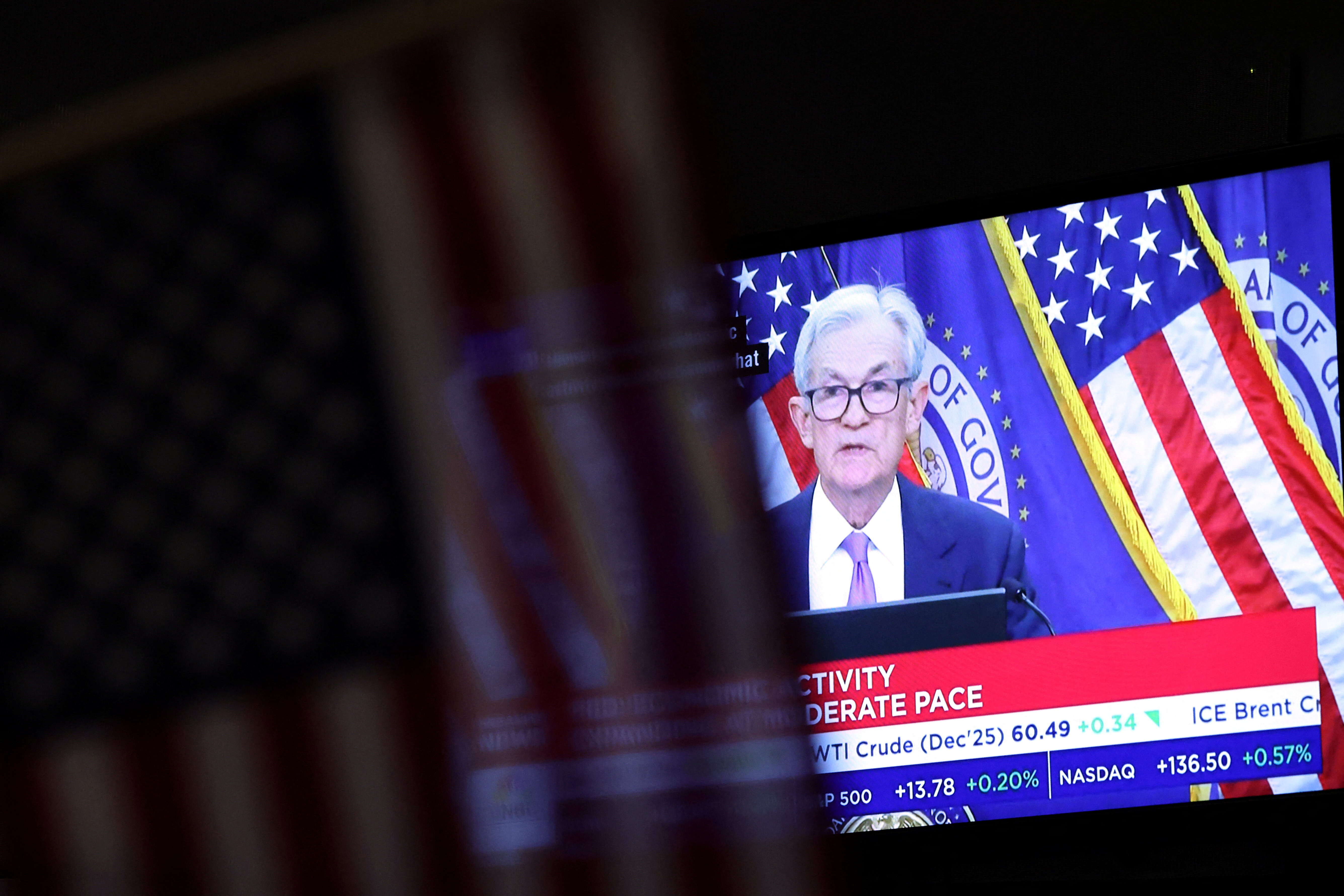5 books to help you understand inflation

These 5 books on inflation can help provide some answers on how inflation comes about and how it can be brought under control.
Image: Unsplash/Ibrahim Boran
Stay up to date:
Russian Federation
Listen to the article
- Sharp rise in searches for the phrase ‘What is inflation?’ according to Google.
- Russians are most worried about inflation, followed by people living in Argentina, Brazil and Turkey, according to Statista’s Global Consumer Survey.
- These 5 books on inflation can help provide some answers on how inflation comes about and how it can be brought under control.
Books are starting to look different because of inflation.
“Some cost-conscious publishers are starting to shrink the white space between characters. The text might run closer to the edges of pages, too,” says a recent article in The Economist.
This is because the cost of paper has surged. The paper that British publishers use has become 70% more expensive in the past year, The Economist says.
Just as many companies downsize products during periods of high inflation so they can keep prices unchanged – a phenomenon known as shrinkflation – publishers are also doing all they can not to have to pass on price rises to increasingly cost-conscious consumers.
Google says there has been a big rise in searches for the phrase “What is inflation?” this year, and it’s hardly surprising, with prices climbing at a record pace in many countries.
Russians are most worried about inflation, according to Statista’s Global Consumer Survey, followed by people living in Argentina, Brazil and Turkey. The biggest jumps in concern, meanwhile, have been in Great Britain, Germany, Spain and Italy.
For anyone concerned or confused by inflation, these five books on inflation can help provide some answers on how inflation comes about and how it can be brought under control. And for those worried about surging paper prices, they are all available as e-books.
Inflation Matters by Pete Comley
How is inflation defined and how is it measured? Why is deflation regarded as a problem?
This book by Pete Comley provides comprehensive coverage of all elements of inflation. Split into four sections, it starts by laying out the facts and fictions about inflation, then runs through examples from different periods in history before looking at the present and ahead to the future.
Accept our marketing cookies to access this content.
These cookies are currently disabled in your browser.
As well as drawing lessons from the hyperinflation of World War I to the depression of the 1930s, it also looks at newer ideas such as “inflationary wave theory”. This is the belief that there is a “marked wave pattern of rising inflation over a century or more, followed by a period of equilibrium with almost stable prices, before the cycle repeats itself”. The duration and extremes of the waves can vary, but duration of the cycle does not, the theory claims.
It also examines the “lowflation” of the 2010s, as the aftermath of the financial crisis kept prices down and laid the path towards the “zero inflation world” from which we are now emerging.
Understanding Money Mechanics by Robert Murphy
Recommended by the US thinktank Foundation for Economic Education as “the book to read if you want to understand inflation”, economist Robert Murphy’s Understanding Money Mechanics sets out to provide a simple guide on “what money is, why it originated, and how it works in the world today”.
It focuses on the links between “price inflation” (rises in the prices of goods) and “monetary inflation” (rises in the supply of money by central banks, such as through quantitative easing).
Accept our marketing cookies to access this content.
These cookies are currently disabled in your browser.
It looks at famous episodes of hyperinflation from history – such as in Zimbabwe in the 2000s, when inflation reached 98% per day at one point – and asks why governments can’t just print more money when the economy gets tight.
The answer? It’s usually a “disaster that results when governments run the printing press too aggressively”.
Inflation Targeting: Lessons from the International Experience by Ben Bernanke et al
Many countries set targets for inflation. This book – written before many central banks took up such a policy – explains why it is a good idea.
Written by former US Federal Reserve Chair Ben Bernanke, along with economists Thomas Laubach, Frederic Mishkin and Adam Posen, it argues that setting percentage targets makes it easier for the public to understand the aims of monetary policy, and increases the accountability of those making the policy.
However, such targets shouldn’t be totally inflexible, it says. Instead, they should "be more like a framework in which the central bank operates in order to stabilize inflation”, according to a review by Oxford University Associate Professor in Economics, Federica Romei.
Accept our marketing cookies to access this content.
These cookies are currently disabled in your browser.
The book includes examples from around the world, including New Zealand, which was the first country to try out inflation targeting. It says such targets have helped keep inflation and interest rates lower. But – as 2022 has shown – the authors also point out that such goals will never keep inflation totally under control.
Talking to My Daughter by Yanis Varoufakis

Former Greek Finance Minister Yanis Varoufakis claims to have written this book in just nine days. Coming in at 224 pages and having the subtitle A Brief History of Capitalism, it sets out to explain “everything you need to know in order to understand why economics is the most important drama of our times”.
Dropping the complex language often associated with economic theory in favour of a straightforward, conversational style, he explains inflation and money supply by comparing them to the market for cigarettes in a German prisoner-of-war camp, UK newspaper The Guardian says in its review.
Higher numbers of cigarettes in circulation made them worth less in the camp, and reduced their exchange value against other goods. At the same time, some people became like cigarette “bankers”, amassing stocks to supply to those unable to pay, but only if the smokers agreed to the accompanying interest rate.
“Varoufakis’s narrative has more than a slight leftwing bent,” says The Financial Times review. He takes aim at the political nature of the decisions of central banks – despite their apparent independence in many advanced economies – and says that control of money always results in control of power.
When Money Dies by Adam Fergusson

This tale of the Weimar Republic dissects what happens when hyperinflation takes hold. How does a country recover when its currency depreciates so much there is no way back?
The Weimar Republic – the government of Germany from 1918 to 1933 – faced inflation of such a scale in 1923 that money became effectively worthless and a barter economy emerged. Prices rose by 29,500% that year, or 21% per day.
Unlike many books on inflation, this one also focuses on the human impact of inflation. How do people cope when they have to swap the clothes off their backs for bread? How does the economy recover, and the population with it?
On top of that, what should governments do? “It is beguiling to suppose that if the day of reckoning is postponed, economic recovery will come in time to prevent higher unemployment or deeper recession. What if it does not?”
It’s a question all governments and central banks should be asking themselves in 2022.
How is the World Economic Forum ensuring sustainable global markets?
Accept our marketing cookies to access this content.
These cookies are currently disabled in your browser.
Don't miss any update on this topic
Create a free account and access your personalized content collection with our latest publications and analyses.
License and Republishing
World Economic Forum articles may be republished in accordance with the Creative Commons Attribution-NonCommercial-NoDerivatives 4.0 International Public License, and in accordance with our Terms of Use.
The views expressed in this article are those of the author alone and not the World Economic Forum.
Forum Stories newsletter
Bringing you weekly curated insights and analysis on the global issues that matter.
More on Financial and Monetary SystemsSee all
Pedro Leitao
November 5, 2025
Aimée Dushime
November 4, 2025
Rebecca Geldard
October 31, 2025
Jon Jacobson
October 28, 2025
Shargiil Bashir, Wissam Yassine and Hassan Abulenein
October 23, 2025
Gorgi Krlev, Lauren Kaufmann and Maoz (Michael) Brown
October 23, 2025







